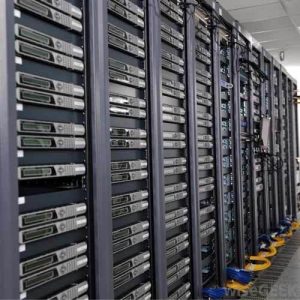In a world where business is transacted 24/7, computing has become increasingly popular. The need to collect data, store data, track, and analyze voluminous data necessitate dependence on computers to ease the workload. However, as computing is increasingly becoming pervasive, energy consumption attributable to computing is escalating, adding an extra cost to businesses and the environment.

The Data warehouses and the sprawling data centres that house them use up a huge amount of power, both to run legions of servers and to cool them. The energy to manufacture, store, operate and cool computing systems has significantly grown due to the volume of systems and computing that companies now heavily rely upon. An E-commerce business with 100,000 servers, for instance, can easily spend up to $20 million on server power, $10million for a/c cooling, summing up to a budget of $30 million on power alone, annually. This growing burden and regulatory measures enforcing a “true cost” of energy are refocusing IT leaders to greenness, and green computing is now gaining traction.
What is Green computing

Eco- Friendly Green Computing is the study and practice of the design, development, implementation, utilization, and disposal of IT infrastructure efficiently and effectively with low or zero impact on the environment whilst reducing operating costs.
Why go green
Global warming and the need to minimize environmental impact from fossil-fuel emissions have raised to the top of global public policy agenda. Research shows that CO2 and other greenhouse gases are causing global climate and environmental damage. These emissions are responsible for a global increase in temperature, which could lead to severe floods and droughts, rising sea levels, and environmental degradation. Preserving the planet is vital for life sustainable and for a robust economy. The fact that we do not own a planet B, calls for an immediate action to mitigate this challenge.
Computing Power Consumption has reached a Critical Point. Data centres have run out of usable power and cooling due to high densities. Computing accounts for 3% of the total energy consumed each year. With a constant increase of 20% per year, the energy consumption level is expected to double come in 2030 as the ICT industry grows. The high energy demand has posed a decline in the power supply. Power supply dependence on fossil fuels- diminishing resources, exerts pressure on the environment. The non-renewable nature of the environment translates to life destruction if immediate action is not taken. Energy efficient systems will help ensure healthy power systems.
Going green is in the best interest of ICT businesses, both in terms of public relations and reduced costs. Green computing is cost savings over time. More efficient energy consumption and lower cost in energy from servers, cooling, and lighting result in reduced expenditure and save on cost. Incorporation of green initiative in business strategy builds on the company’s reputation and brand value. Investing in a strong sustainability program and communicating the value to customers and stakeholders can do wonders for one’s reputation and brand. Companies without sustainability initiative and strategy are now unfashionable.
Sustained growth requires sustainable operations. Putting a computer in sleep mode during inactive times can cut energy use on average 60-70 percent and up to 90 percent in high usage cases. As the company grows and as demands on IT and PC networks increase, getting control over energy use will become an important advantage.
How can a company reduce effects on the carbon footprint whilst maintaining its computing performance?
Virtualisation: involves consolidating each server onto a larger virtualized system that uses its resources to the fullest, and has a much smaller energy footprint instead of having a computer for only one service or a set of services. It consists of virtualised servers, grid computing, data centre automation and provisioning, and virtual networking and telecommuting.
Performance tuning: The process of adjusting a computer so that it will perform to the best of its ability, given its current or aggregate workload. This helps maximize on the computing potential and reduce energy footprint by avoiding unnecessary hardware upgrades, cooling, and associated e-waste. Less allocation of resources internally for a given software process leads to overall energy efficiency. For instances Disk I/O, CPU, memory reduction can lead to quantifiable energy savings.
Power management. The Advanced Configuration and Power Interface (ACPI), an open industry standard, allows an operating system to directly control the power saving aspects of its underlying hardware. This allows a system to turn off automatically, components such as monitors and hard drives after set periods of inactivity. A system also goes into hibernation, when most components (including the CPU and the system RAM) are turned off.
Life cycle assessment. Many businesses largely consider the economic benefits of their computing system, without a second thought on its environmental or social impact. Life cycle consideration means that manufacturers create computers that reflect the green triple bottom line of environmental, social, and economical friendliness, while consumers ensure that they run the system efficiently by reducing on power usage and disposing them appropriately or recycling them.
Recycling: Computer systems that have outlived their purpose can be salvaged and refurbished through licensed retail outlets, municipal and private sectors. Recycling computing equipment keep harmful materials such as lead, mercury, and hexavalent chromium out of landfills. Life cycle assessment ensures that the whole process surrounding computers are more friendly to the planet, the people and also be profitable.
The environment is not a renewable resource. The fact that no planet B exist, means we cannot destroy our environment just for a selfish economic gain, nature responds to our destructive actions. So how green is your business computing style? Save a life today.



